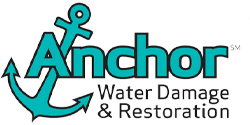Most Common Appliances That Can Cause Flood Damage
Any appliance that has water pipes or lines that feed into a water line has the potential to spring a leak or develop a blockage. If left unchecked, they can lead to serious flooding and damage at your home or office.
Here are the Five Most Common Household Appliances that Can Be Sources of Flooding:

1. Refrigerator
Refrigerators generate quite a bit of excess moisture, especially when they are running in a warm climate. Each time you open the fridge door, condensation is created from the warm air crossing over the condenser coil. Often this condensation builds up as water on your refrigerator floor.
Most fridges are equipped with drain lines to funnel out this surplus liquid. However, drain lines can become obstructed with spills, food, and debris from your fridge contents. This prevents the surplus liquid from draining effectively.
What to do: Clean your drain lines regularly with chlorine bleach to ensure they stay unplugged.
Another common offender that can cause leaks from your refrigerator is the water supply line that feeds into your ice machine. If this line comes loose or springs a leak, it can cause an enormous amount of standing water when it’s discovered.
What to do: Check where your water line attaches and ensure that it’s secure and has the slack it needs. Follow the path of your water line to make sure there is nothing that could cause a leak or kink.
2. Dishwasher
A dishwasher can overflow at times simply because too much cleaning solution was added, or even the wrong type of detergent was put in its dispenser. At other times, a dishwasher might leak because of a clogged strainer, a leaky hose, or a loose plumbing connection.
What to do: Remove the strainer and wash it out with a mild detergent and a stiff bristle brush in your sink.
A faulty float switch assembly can cause a dishwasher leak, which is pretty easy to replace.
If you know for sure that the resulting water damage is not due to the strainer or float switch, then the problem is most likely one of your dishwasher plumbing connections. It could be coming from metal pipe fittings that attach the appliance to the main water supply, or it could be the pliable hose that channels the used water to the under-sink drain.
3. Water Heater
If you see water accumulating at the bottom around your gas water heater, the leak is due to one of these:
- Leaky plumbing connection
- Corrosion in the water tank
- Faulty T&P (temperature and pressure) relief valve
What to do: Test the T&P valve by rinsing water through it to unblock any buildup, debris, or residue. If the problem is the water tank itself, it will need to be replaced. The key to preventing an impairment is to have timely and proper maintenance each year by a certified and licensed plumber.
4. Washing Machine
A leaky washing machine can make a real mess. Fortunately, in most cases, they are simple to fix. Before grabbing your tool box though, make sure that the water leak is not from a clogged floor drain. The six prime culprits for washer leaks are:
- Hose connections
- Inlet connections
- Outer tub seal
- Center post gaskets
- Air dome seal
- Pump
What to do: Check your appliance owner’s manual to learn the specific location of each of these culprits in your machine. Unplug your washer and turn off your main water line. Then begin troubleshooting each of these culprits one at a time until you find the problem.
5. Toilet
When your toilet overflows, it’s usually because of a faulty float that allows too much water into the tank, or because the drain is clogged.
What to do: If plunging won’t clear the drain pipe, then the blockage might be in the pipes outside your home. Call in a professional plumber!
If you do need emergency flood repair in Murray or Alpine, Utah, call the experts at Anchor Restoration. We are here to help and have the certification and experience to fix any size flooding problem.








